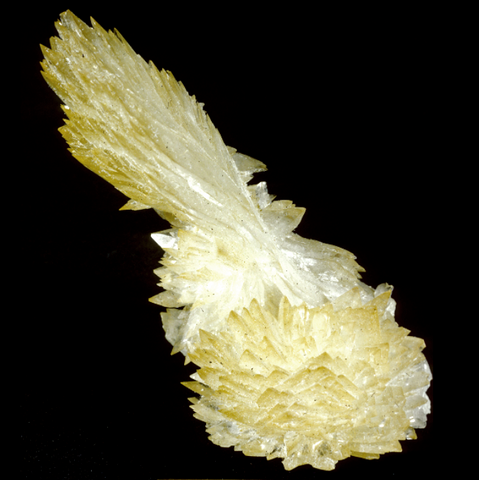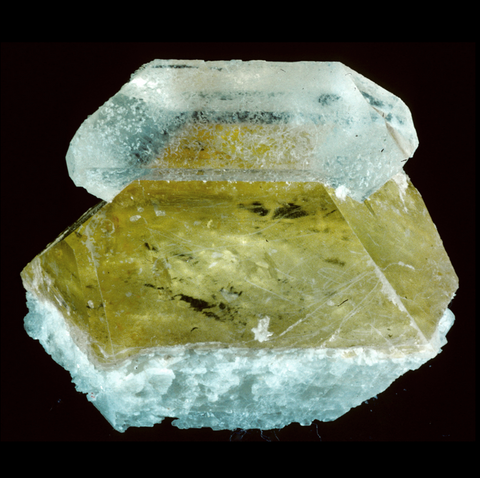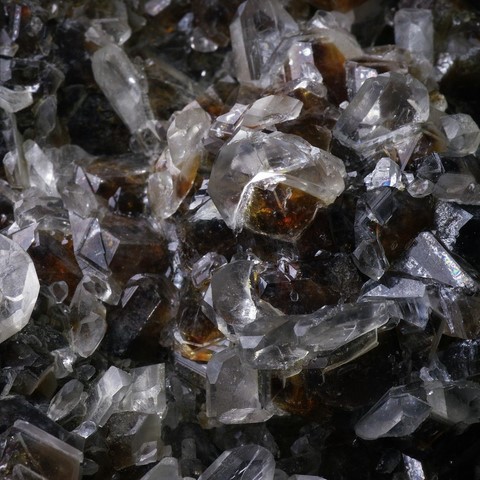COLEMANITE
Class : Carbonates, nitrates, borates
Subclass : Borates
Crystal System : Monoclinic
Chemistry : Ca2B6O11 H2O
Rarity : Fairly rare
Colemanite is like the vast majority of borates, a mineral formed by evaporation from salt lakes and lagoons in a desert environment. The waters of these lakes contain large amounts of borated brines due to volcanic vapors. It owes its name to William Tell Coleman, founder of the Californian boron industry and owner of the mine where it was discovered (Furnace Creek, California). In its salt lake deposits, colemanite is associated with many salts : borates (ulexite, borax, kernite...), halite, glauberite, thenardite, gypsum... More rarely, it is present in hot spring deposits (Chile). It appears to originate from the hydration of primary borates (borax and ulexite). The crystals occupy large dissolution cavities in these primary borates, which allows them to develop various automorphic facies : short prismatic to isometric (pseudo-octahedral), or lanceolate with sharp edges (pseudorhombohedral). Colemanite also occurs in compact masses, sometimes in spherolitic aggregates. It has a vivid vitreous to adamantine luster, a high density for a borate (2.4) ; it is colorless to milky white, sometimes yellowish-white, gray or brown. In the past, it was the world's main source of boron before being replaced by kernite.
Colemanite in the World
Twinning
No twin report for this mineral species.
Fakes and treatments
Hardness : 4.5
Density : 2,42
Fracture : Irregular to sub-conchoidal
Trace : White
TP : Translucent to transparent
RI : 1.586 to 1.614
Birefringence : 0.028
Optical character : Biaxial +
Pleochroism : Not visible
Fluorescence : Blue, green, yellow
Solubility : Hydrochloric acid
Magnetism : None
Radioactivity : None





